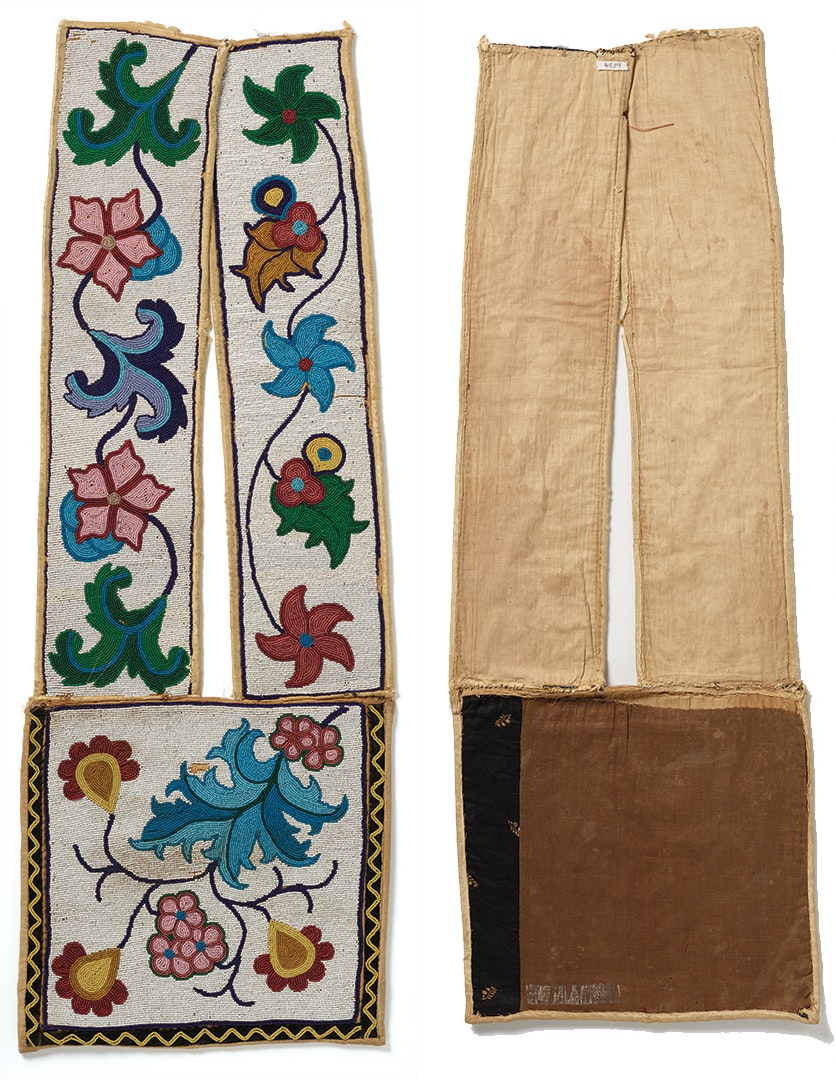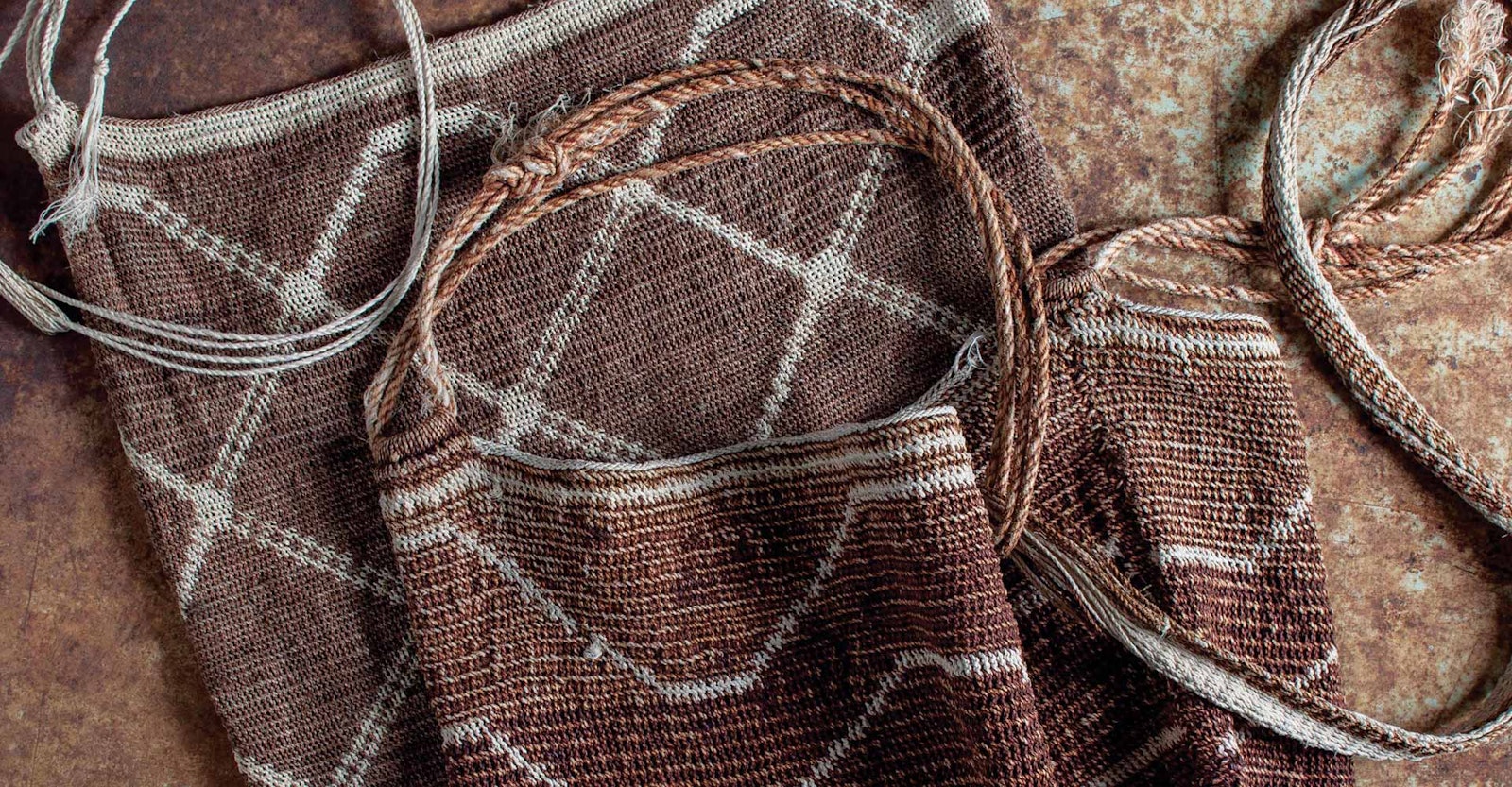Textiles carry layer upon layer of history. The deeper you look, the more there is to learn. As a handspinner and shepherd, I find the threads, yarns, cloth, and colors of historic textiles endlessly fascinating. We can discover so much about makers and how they interacted with their environments and materials at hand if we look closely enough. Or we can step back and look at a textile and maker in the larger scope of history, adding the context of social constraints and political pressures. Techniques, materials, and the maker’s creative voice combine to produce stitches that can outlive the human hands that formed them.

Anishinaabe (Ojibwe) Native North American bandolier bag (front and back). There would likely have been fringe or other finishing detail on the bottom edge of the bag at one time, or perhaps the bag was unfinished. Museum Works of Art Fund. Photo courtesy of the RISD Museum, Providence, Rhode Island
To me, this is the work that PieceWork has always done, connecting us to the human experience through the medium of needlework. In this issue, I think most of us can relate to the excitement of a new, modern material, such as Beverly Gordon describes in her article on crepe paper in the early twentieth century. We can honor the determination of the South American Ayoreo people as they work to save their textile traditions, a story shared by Keith Recker. And you might discover after reading A. K. Fielding’s article that you find the same solace in needlework as Martha Washington did in the eighteenth century.
The extraordinary authors in this publication connect makers of the past and readers of today. This is a gift, and I’m excited to work with them as we lift creative voices from around the world.
—Kate Larson
To see more stunning examples of historical bandolier bags, visit the following websites:
Minnesota Historical Society Collections
Wisconsin Historical Society Collections
RISD Museum Collection
Pennington Historical Society
Download your copy of the Spring 2020 issue of PieceWork.

